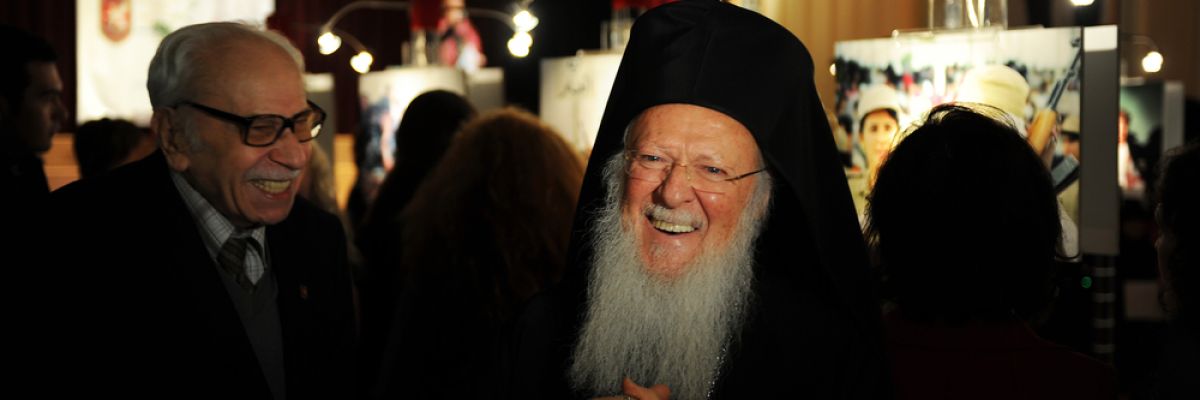
According to Scripture, Christ founded a visible church that has the authority to teach and discipline believers, and will never go out of existence (Matt. 16:18-19, 18:17). St. Paul tells us that this Church was built on “the foundation of the apostles” (Eph. 2:20) and would have a hierarchy composed of deacons (1 Tim. 2:8-13); presbyters, from where we get the English word priest (1 Tim. 5:17); and bishops (1 Tim. 3:1-7). Paul even instructed one of these bishops, Titus, to appoint priests on the island of Crete (Titus 1:5). This visible structure is very clear in the Bible.
Unlike the apostles, who would eventually die, Christ’s Church would remain on earth until his Second Coming. In order to accomplish this, the apostles passed their authority to bind and loose doctrine (Matt. 18:18), forgive sins (John 20:23), and speak on behalf of Christ to their successors (Luke 10:16). Acts 1:20, for example, records how after Judas’s death, Peter proclaimed that Judas’s office (or, as the KJV translates it, his bishopric) would be transferred to a worthy successor. In 1 Timothy 5:22, Paul warned Timothy to “not be hasty in the laying on of hands” when Timothy appointed new leaders in the Church.
The visible, historical reality
There are very early accounts of this hierarchy in the texts of early Christian authors. In A.D. 110, St. Ignatius of Antioch told his readers:
Follow the bishop, even as Jesus Christ does the Father, and the presbytery as you would the apostles; and reverence the deacons, as being the institution of God. Let no man do anything connected with the Church without the bishop (Letter to the Smyrnaeans).
At the end of the first century, the fourth pope, Clement I, reminded the Christians in the city of Corinth about apostolic succession, saying:
Our apostles knew through our Lord Jesus Christ that there would be strife for the office of bishop. For this reason, therefore, having received perfect foreknowledge, they appointed those who have already been mentioned and afterwards added the further provision that, if they should die, other approved men should succeed to their ministry (Letter to the Corinthians, 44:1–3).
Both the New Testament and the records of the early Church show that this succession of authority has enabled the Church to preserve the apostles’ original teachings. For example, the book of Acts describes how the members of the Church “held steadfastly to the apostles’ teaching and fellowship, to the breaking of the bread and to the prayers” (Acts 2:42). The Didache, a first-century catechism, exhorts Christians to “Assemble on the Lord’s day, and break bread and offer the Eucharist; but first make confession of your faults, so that your sacrifice may be a pure one” (Didache, 14).
In the second century, St. Justin Martyr wrote about the Mass and how the assembled “offer hearty prayers in common for ourselves and for the baptized [illuminated] person, and for all others in every place,” and after that, they “salute one another with a kiss.” The presider then takes bread and wine and does the following:
[He] gives praise and glory to the Father of the universe, through the name of the Son and of the Holy Ghost, and offers thanks at considerable length for our being counted worthy to receive these things at his hands. And when he has concluded the prayers and thanksgivings, all the people present express their assent by saying Amen (First Apology, 65).
Justin’s description corresponds to the prayers of the faithful, the kiss of peace, the prayer of thanksgiving, and the great amen that are still said at Mass today.
The invisible, communal reality
There is also a sense in which “the Church” exists as the invisible bond of unity among all baptized Christians, which include Catholics, Protestants, and the Eastern Orthodox. But that is not the same as saying the Church just is this invisible bond of unity.
According to the Congregation for the Doctrine of the Faith (CDF), “the Christian faithful are therefore not permitted to imagine that the Church of Christ is nothing more than a collection—divided, yet in some way one—of churches and ecclesial communities” (Dominus Iesus, 17). The CDF went on to say that the faithful can’t say the one Church of Christ doesn’t really exist or that it is merely a goal toward which all Christians should strive. They must instead acknowledge that “the elements of this already-given Church exist, found in their fullness in the Catholic Church” as taught by John Paul II (Ut Unum Sint, 14).
The Second Vatican Council taught that this one Church of Christ:
[C]onstituted and organized in the world as a society, subsists in the Catholic Church [emphasis added], which is governed by the successor of Peter and by the bishops in communion with him, although many elements of sanctification and of truth are found outside of its visible structure. These elements, as gifts belonging to the Church of Christ, are forces impelling toward catholic unity (Lumen Gentium, 8).
Some may wonder why the Council Fathers used the phrase “subsists in the Catholic Church” rather than “is the Catholic Church” in this paragraph. This was done to affirm that non-Catholic Christian churches can contain true doctrines. They are also capable of bringing about sanctification, or an increase in holiness, among their members. One example of this would be Eastern Orthodox churches, since they have valid holy orders and valid sacraments like the Eucharist. However, since they do not recognize the unique authority of the pope as well as other important doctrines, they are considered separated brethren who are only in partial communion with Christ’s Church. The CDF said in 2007:
It is possible, according to Catholic doctrine, to affirm correctly that the Church of Christ is present and operative in the churches and ecclesial communities not yet fully in communion with the Catholic Church, on account of the elements of sanctification and truth that are present in them (To Some Questions Regarding Certain Aspects Of The Doctrine On The Church).
The term “ecclesial communities” refers to denominations that came into existence as a result of the Protestant Reformation. Unlike the Eastern Orthodox, or even Anglicans in the seventeenth century, these denominations lack a valid priesthood, and so they cannot confer the sacrament of the Eucharist, which is the source and summit of the Christian life. Even though these Christians do not belong to churches in the proper sense of the word, the CDF acknowledged that “those who are baptized in these [ecclesial] communities are, by baptism, incorporated in Christ and thus are in a certain communion, albeit imperfect, with the Church” (Dominus Iesus, 17).
The vitality of ecumenism
The Catholic Church acknowledges what is holy and true in other Christian communities, but it does not let these things undercut the necessity of evangelizing our separated brethren. Indeed, it would be unloving to withhold the saving power of the sacraments for fear that the Church’s teaching on these matters may offend those who disagree. As John Paul II said, “ecumenism is directed precisely to making the partial communion existing between Christians grow toward full communion in truth and charity” (Dominus Iesus, 17).



